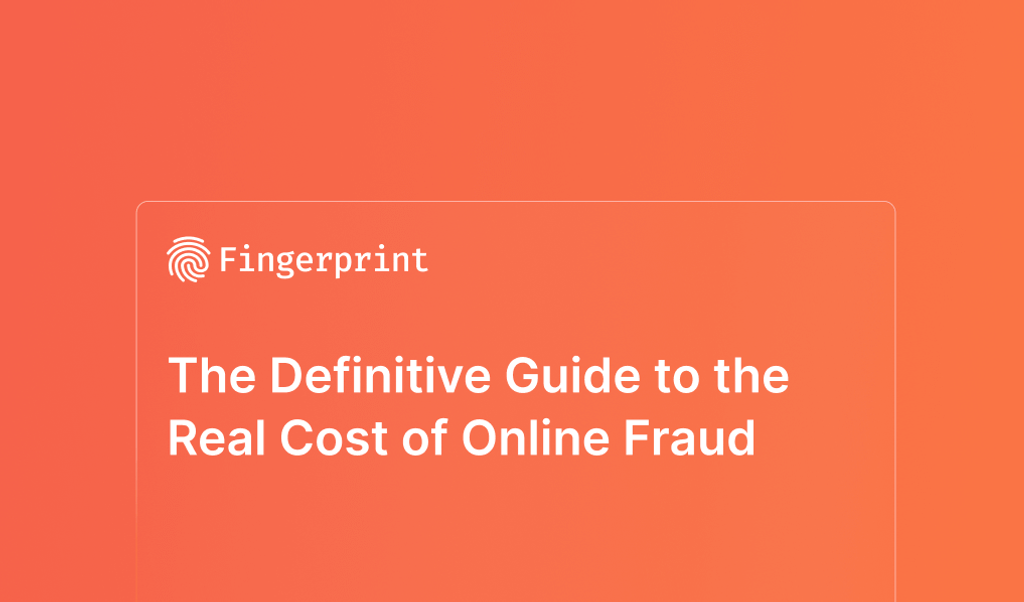
Summarize this article with
Money laundering is a genuine issue, significantly impacting global economies and supporting illegal industries. Criminals employ intricate methods to hide their illegal earnings. The UN Office on Drugs and Crime estimates that $800 billion to $2 trillion, or 2-5% of global GDP, is laundered through cash markets each year. Anti-Money Laundering (AML) is essentially a framework designed to identify and prevent the conversion of ill-gotten gains into legitimate funds.
This report aims to provide an in-depth understanding of AML and the importance of combating money laundering, enabling you to better protect your platform against these undercover financial threats.
Basics of Money Laundering
Money laundering is the complex process by which 'dirty money', or funds obtained from illegal activities, is made to appear legitimate, effectively 'cleaning' it. This process not only hides the illicit origins of the money but also allows those involved to enjoy their ill-gotten gains without attracting the attention of regulatory and law enforcement agencies.
Money laundering involves three key stages: placement, layering, and integration. Each stage plays a crucial role in transforming illicit funds into seemingly legitimate assets.
Placement: Introducing Illegal Funds
Placement is the initial phase where criminals introduce their illegal earnings into the financial system. While it might seem straightforward, the large volume of illicit money requires careful planning.
High-cash businesses like car washes, retail shops, or bars, are commonly used for this purpose. According to a report by LexisNexis, these establishments can easily blend large amounts of cash into their daily transactions, making the funds harder to trace back to criminal activity.
Layering: Separating Illicit Funds from their Source
After the initial placement, the money needs to be distanced from its source. This stage, known as layering, involves moving the funds through a series of complex financial transactions to obscure the trail. This often includes transferring money between different accounts (sometimes across different banks or even countries), altering the form of the money by buying and selling assets, or simply withdrawing and depositing the money repeatedly.
The increasing interconnectedness of the global banking system, along with the rise of cryptocurrencies and online financial platforms, has provided money launderers with new opportunities to conceal the origins of illicit funds.
Integration: Bringing 'Clean' Funds Back into the Economy
The final stage, integration, is where the now 'clean' money is returned to the economy, making it indistinguishable from legitimate assets. The launderer might invest in legal business ventures, purchase high-end products, or engage in high-value real estate transactions.
Research by the European Parliament estimated that 30 percent of money laundered funds were integrated into the economy via real estate transactions between 2011 and 2013.
Cities such as New York, London, Sydney, and other high-priced locations are hotspots where properties are purchased not only for their real estate value but also as means to legitimize large amounts of money.
The complexity of modern financial systems, along with the global nature of many business ventures, has made it increasingly challenging to identify money laundering at the integration stage. This requires financial institutions and regulatory bodies to remain vigilant, innovative, and a step ahead of those looking to exploit the system.
The reality of money laundering is a complex, global issue that continues to evolve. The three stages—placement, layering, and integration—provide a framework for understanding how illicit funds are cleaned.
Modern Techniques in Money Laundering
The evolution of financial systems, spurred by technological advancements, has brought with it novel methods employed by money launderers. These new techniques, while innovative, pose a challenge for regulatory bodies struggling to keep up.
Understanding these modern strategies is key to curbing the flow of illicit funds and protecting the integrity of our financial systems.
Cryptocurrency and Digital Wallets Usage
The emergence of digital currencies like Bitcoin, Ethereum, and thousands of altcoins has revolutionized money laundering. Cryptocurrencies operate mostly on decentralized platforms, offering pseudo-anonymity and escaping traditional banking oversight.
A 2022 study by Chainalysis, a blockchain analytics firm, revealed that over $23 billion was laundered through cryptocurrencies that year, only considering funds linked to known criminal addresses.
Digital wallets, which enable users to store and manage their digital currency, require minimal personal information for setup.
The infamous Silk Road marketplace, which functioned on the dark web until its closure in 2013, is a clear example of how cryptocurrencies can facilitate illicit trade and subsequent laundering activities.
Online Gaming and Gambling as Layering Tools
The online gaming and gambling industry has seen a surge in growth over the past decade. While it provides entertainment for millions, it's also become a sanctuary for money launderers.
Players can purchase in-game assets and virtual currencies, effectively layering their illicit funds. These assets can be traded or sold, and the laundered money is retrieved through game-associated payouts or third-party marketplaces.
A UNDOC report states that up to $140 billion is laundered through sports betting alone annually. Games with large player bases and open economies, like "World of Warcraft'' or "Counter-Strike: Global Offensive", are vulnerable to these illegal activities.
Offshore Banks and Shell Companies Usage
While offshore banking has many legitimate uses, it can also be a tool for hiding assets. Banks located in jurisdictions with strict banking secrecy laws offer an extra layer of privacy.
The Panama Papers leak in 2016 exposed a vast network of shell companies, revealing how influential individuals worldwide channeled money through offshore entities to dodge taxes and potentially launder money.
Moreover, shell companies, which exist on paper but often have little or no actual business operations, can be established to disguise the true ownership of funds.
Reports suggest that Fortune 500s alone hold around $2.6 trillion offshore, and individuals have stashed $8.7 trillion in tax havens. While not all of this is unlawful, a significant part is believed to be hidden to evade taxation or oversight.
Trade-based Laundering (Over/Under-Invoicing)
Trade-based laundering involves manipulating the price, quantity, or quality of a good or service to transfer value and conceal the movement of illicit funds. Over-invoicing artificially inflates the price of a product or service, while under-invoicing does the opposite.
According to a Global Financial Integrity report, trade-based money laundering could amount to hundreds of billions or even trillions of dollars annually. This practice not only aids money laundering but can also distort global trade statistics, market dynamics, and national economies.
The modern techniques in money laundering demonstrate the adaptability and innovation of criminals seeking to exploit financial systems. While technological advancements bring convenience and progress, they also create new opportunities for illicit activities.
Types of Fraud Enabled by Money Laundering
Money laundering is not just a standalone crime. Beyond the act itself, the laundering of money often facilitates a web of other illicit activities, transforming it into a critical enabler of large-scale fraud.
By 'cleaning' their ill-gotten gains, criminals can more easily finance and perpetuate other forms of illegal activities, further challenging societal structures, economic systems, and global security.
Types of Fraud Enabled by Money Laundering
Money laundering is more than a standalone crime. It often facilitates a network of other illegal activities, making it a key enabler of large-scale fraud.
'Cleansed' ill-gotten gains allow criminals to finance and perpetuate further illegal activities. These activities challenge societal structures, economic systems, and global security.
Financing of Terrorism
Laundered money often funds terrorism. Terrorist organizations need substantial funding to support their operations, ranging from recruitment and training to logistics and carrying out attacks. Laundered funds provide these groups with necessary resources, often funneled through seemingly legitimate businesses or charities.
The 9/11 Commission Report noted that Al-Qaeda used an informal value transfer system known as "Hawala" to move money, bypass formal banking systems, and avoid detection. Such systems, combined with laundered funds, form a potent mix that fuels terrorist activities globally.
Tax Evasion and Tax Fraud
Tax evasion is a primary motivation behind money laundering. By hiding the origins and ownership of funds, individuals and corporations can underreport income and assets, thereby avoiding their tax obligations. This fraud not only has fiscal implications but also erodes trust in taxation systems and creates disparities where the general public bears a disproportionate tax burden.
The Panama Papers, mentioned earlier in this article, revealed a large network of offshore accounts and shell companies used by wealthy individuals and corporations to conceal assets and evade taxes. This scandal exposed a system that annually costs governments hundreds of billions of dollars in tax revenues.
Real Estate Fraud
The real estate market is a prime target for money launderers. By buying property with illicit funds, the value of the money is effectively 'stored' in the asset. This asset can then be sold or leased to reintroduce 'clean' money into the economy.
In the US alone, between 2015 and 2021, over $2.3 billion was laundered through real estate. This activity inflates property values, potentially pricing legitimate buyers out of the market, and destabilizes housing sectors.
Securities and Market Manipulation
Financial markets are also susceptible to the influences of laundered money. Criminals can use laundered funds to artificially inflate stock values through "pump and dump" schemes. They drive up share prices and then sell off their holdings, leaving legitimate investors with worthless stocks.
Money laundering, while a severe offense in itself, also paves the way for other financial and societal crimes. It impacts every aspect of the global economy, from the skyscrapers of major cities to the digital corners of cryptocurrency exchanges.
Industries at Risk from Money Laundering Activities
Money laundering affects numerous industries, with some being more vulnerable due to their size, nature, or lack of regulatory oversight. Understanding these vulnerabilities can help industries protect themselves against the threats of laundered funds.
Financial Services
Traditional banks have historically been primary targets for money laundering. According to an International Monetary Fund (IMF) report, global money laundering transactions are estimated between 2-5% of global GDP, a significant portion of which passes through conventional banking channels.
Banks like HSBC and Deutsche Bank have faced penalties for failing to implement stringent anti-money laundering procedures.
Beyond banks, the Buy Now, Pay Later industry, valued at over $300 billion in 2023, could also attract launderers due to its rapid transaction times and relatively relaxed regulatory scrutiny.
Cryptocurrency exchanges also need more rigorous oversight than traditional financial systems. In 2022, illicit crypto exchange transaction volume exceeded $20 billion.
Real Estate
Real estate is a favorite domain for money launderers. Properties serve as tangible assets where the value of illicit funds can be parked. Cities with booming property markets, like London, New York, and Sydney, have seen a significant influx of foreign investments in real estate.
Buying properties anonymously through shell corporations further complicates tracking these illicit transactions.
Luxury Goods
The art world is ripe for money laundering due to its subjective valuations and private sales. The global art market, which reached $67.8 billion in sales in 2022, is a favored choice for concealing large sums. The purchase of high-value jewelry and vehicles also allows launderers to store wealth discreetly.
In 2021, The New York Times reported that the U.S. Congress extended Anti-Money Laundering regulations, mirroring recent actions in Europe, from banking into the art world. They also required the Department of Treasury to investigate whether the art world should be subject to more stringent regulations.
eCommerce Platforms
The rise of eCommerce platforms has opened a new route for money laundering. Offenders can create fake storefronts, list products at inflated prices, and 'sell' these items to themselves. These fraudulent storefronts contribute to a $352 billion problem that has been troubling eCommerce sites for years.
Online Gaming and Gambling Platforms
Online gaming platforms have become instrumental in money laundering activities. Criminals can purchase in-game assets, amass in-game currency, and then sell it for real-world money. This happens in such games as Fortnite and World of Warcraft through two main methods: in-game microtransactions, carding fraud.
Online gambling sites can also be manipulated. Criminals can bet laundered money on sure-loss bets to colluding players, extracting 'clean' money with minimal suspicion.
The Regulatory Environment
The expansive realm of money laundering requires a strong regulatory framework. Without rigorous checks and policies, illicit activities could proliferate, jeopardizing societal economic structures and promoting illegal industries.
As money laundering tactics have evolved over time, so have the laws and regulations aimed at combating them.
AML laws and regulations around the world
Each major economy has established its own AML laws, reflecting both international standards and unique domestic challenges.
A cornerstone of American AML legislation is the Bank Secrecy Act (BSA), mandating financial institutions to aid government agencies in detecting and preventing financial crimes. The USA PATRIOT Act of 2001 further strengthened AML regulations, particularly in response to the 9/11 attacks, by extending the role of financial institutions in monitoring transactions, especially those connected to foreign entities.
The EU has implemented a series of AML directives, with the Sixth Anti-Money Laundering Directive (6AMLD) being the latest. Additionally, jurisdictions in the Asia-Pacific are enhancing their AML measures, reflecting the region's increasing economic influence. Countries like Singapore and Hong Kong have adopted AML regulations in line with international standards, focusing on sectors susceptible to laundering.
The role of the Financial Action Task Force (FATF)
The Financial Action Task Force (FATF) plays a significant role in the global battle against money laundering. Established in 1989 by the G7, the FATF is an intergovernmental body that sets international standards for fighting money laundering, terrorist financing, and other related threats.
The FATF's "40 Recommendations" are the global benchmark for AML measures. These recommendations offer a comprehensive framework for countries to fortify their financial systems against money laundering, covering areas from legal systems and regulatory standards to international cooperation.
The FATF also regularly assesses member countries for compliance with these standards. Non-compliant countries can risk damaging their reputation, and in severe cases, face economic sanctions.
Penalties for non-compliance
Non-compliance with AML laws can result in severe penalties, from financial fines to more punitive measures, depending on the jurisdiction.
For example, in the European Union, penalties can include a prison sentence of five years or more and prohibitions on businesses from entering contracts with public authorities. In the US, penalties can be stricter, including up to 20 years in prison and fines amounting to twice the value of the property involved in the transaction, in addition to civil penalties.
Furthermore, non-compliance can lead to secondary implications such as reputational damage. Such incidents can erode trust, resulting in the loss of customers, partners, and investors.
Mitigating Money Laundering Risks
Money laundering is a constant threat, with increasingly complex strategies emphasizing the need for strong countermeasures. While no system is foolproof, the risks can be significantly mitigated through a combination of technology, vigilance, training, and international collaboration.
Advanced Identification and Transaction Monitoring Systems
The rise of digital transactions necessitates advanced technologies to detect and prevent illicit activities. Device identification and transaction monitoring are essential tools in modern anti-money laundering (AML) efforts.
Device Identification
Device identification captures data points from a device, such as the IP address, screen resolution, installed fonts, and browser plugins, creating a unique visitor identifier, which can identify suspicious or unusual behavior.
Device identification solutions, like Fingerprint, operate in the background, reducing disruption and friction during the user experience. This type of identification also reduces false positives, making legitimate transactions less likely to be mistakenly flagged as fraudulent, enhancing user experience. Fingerprint collects over 70+ signals, including device configuration, browser settings, and behavioral patterns, to help to better identify users.
Transaction Monitoring Systems
Transaction monitoring systems scrutinize every transaction in real-time, comparing them against known illicit behavior patterns. For example, frequent large transactions just below a reporting threshold—a tactic known as structuring or smurfing—can be instantly flagged.
AI's main advantage in transaction monitoring is its ability to quickly process vast amounts of data, identifying complex patterns that may be missed by human analysts. For instance, FICO's AI-powered AML scores reduce false positive alerts by 50% while detecting all known money laundering transactions.
The financial industry agrees that device identification and transaction monitoring are effective in preventing money laundering in the. As technology and finance continue to intersect, these tools will play an increasingly vital role in protecting the world's financial systems.
Implement Know Your Customer (KYC) Procedures
A Know Your Customer (KYC) protocol is a crucial frontline defense against money laundering. It is essential for regulatory compliance and risk management. KYC procedures enable institutions to thoroughly understand their customers, their financial behaviors, and potential risks.
KYC primarily involves:
- Verifying a customer's identity.
- Understanding the customer's activities.
- Assessing risks of illegal intentions in the business relationship.
This process usually includes collecting and verifying the customer's details, understanding the source of their funds, and monitoring transaction behaviors for irregularities.
A rigorous KYC process has several benefits. Besides regulatory compliance, it helps institutions protect their reputation, better understand their customers (thus enabling personalized services), and safeguard their bottom lines from potential fraud.
However, comprehensive KYC processes also present challenges. There is a constant balance between thorough customer due diligence and a smooth customer experience. Extensive KYC checks can sometimes result in delays in customer onboarding, causing frustration. Moreover, the various international KYC regulations require global institutions to be aware of regional variations and requirements.
Technological innovations, such as digital identity verification, biometric checks, and other verification systems, are helping to bridge this gap. For instance, optical character recognition (OCR) for scanning identity documents and facial recognition software for live identity checks have reduced the time and friction traditionally associated with KYC processes.
KYC will continue to be a crucial tool in the fight against money laundering. Its evolution, driven by technological advancements and a changing financial landscape, will help ensure that economic systems remain secure, transparent, and trustworthy.
Ongoing Employee Training for AML Compliance
A combination of human diligence and technology forms a strong defense against money laundering. While advanced systems play a key role in detecting suspicious transactions, the keen eyes and minds of trained professionals often make the difference. This underscores the need for ongoing training in AML compliance as a crucial component of a comprehensive defense strategy.
Effective AML training isn't solely about identifying suspicious transactions. It involves a thorough understanding of regional and global regulations, awareness of emerging laundering trends, and fostering a culture of diligence and vigilance. Case studies are a critical part of this training, offering employees real-world scenarios and helping them grasp the complexities of potential laundering schemes.
While the need for regular training is widely acknowledged, implementing it is a challenge. The variety of roles within a financial institution means a one-size-fits-all training program may not be effective. For example, a bank teller might need more hands-on training to identify suspicious transactions, while a senior executive may require a deeper understanding of regulatory compliance and potential reputational risks.
Beyond compliance and regulatory needs, effective AML training impacts real-world operations. Financial institutions with robust training programs are better equipped to identify and prevent potential threats, safeguarding their operations and, by extension, the broader financial ecosystem.
Collaborations and Partnerships for Cross-Border Anti-Money Laundering Efforts
Criminals take advantage of cross-border transactions, exploiting regulatory differences and the immense volume of international finance. Consequently, no institution, regardless of size or jurisdiction, stands alone. Collaborations and partnerships are crucial to enhance defenses against money laundering activities.
Money launderers often manipulate gaps in international cooperation to move illegal funds across borders. Even countries with robust domestic Anti-Money Laundering (AML) frameworks need international collaboration for effective countermeasures.
The Egmont Group
The Egmont Group, a united body of 170 Financial Intelligence Units (FIUs), exemplifies such a partnership. By facilitating information exchange, sharing analysis techniques, and providing training resources, the Egmont Group plays a key role in global anti-money laundering efforts. Its reports emphasize the identification and disruption of international money-laundering networks involving billions of dollars.
Operation Trojan Field
Another example comes from Operation Trojan Field, a global law enforcement initiative led by the FBI and assisted by Europol and numerous other partner agencies. Law enforcement agencies penetrated a widely-used encrypted platform for criminals, enabling them to observe and intercept messages. Over 800 individuals linked to crimes like drug trafficking and money laundering were arrested due to this joint effort by 16 countries. Operation Trojan Shield demonstrates the power of global collaboration in tackling international criminal networks.
As financial systems evolve and money laundering techniques become more sophisticated, the collective vigilance enabled by global collaborations will guide our efforts, ensuring the financial world's integrity remains intact.
Regular Audits and AML Risk Assessments
The field of Anti-Money Laundering (AML) is dynamic, characterized by evolving threats and continuous advancements in regulatory frameworks. Therefore, an organization's AML measures are only as effective as their most recent assessment. Regular audits and AML risk assessments form the foundation of a resilient AML strategy, enabling institutions to stay ahead of potential vulnerabilities and threats.
AML Penalties Result in Fines
Consider the risks of navigating a rapidly changing landscape without frequently checking your map. The potential dangers of this approach in the financial sector become clear when looking at the fines imposed on institutions. In 2022, the total amount of AML fines worldwide reached nearly $5 billion, a 50% increase from the previous year.
Many of these penalties resulted from failures to maintain updated compliance measures, highlighting the crucial need for regular audits. In a climate defined by fluid financial transactions, shifting geopolitical realities, and technological innovations, not staying up to date is not just risky—it's costly.
Conduct Regular AML Policy Audits
A thorough AML audit involves reviewing an institution's policies, procedures, and controls. It goes beyond simple compliance checks. It's an in-depth evaluation of the effectiveness of transaction monitoring systems, the thoroughness of customer due diligence procedures, and the responsiveness of suspicious activity reporting protocols.
In addition to audits, proactive AML risk assessments help to identify, assess, and prioritize potential vulnerabilities. The US Treasury Department offers several AML case studies through the National Money Laundering Risk Assessment (NMLRA).
Regular audits and risk assessments are not just regulatory requirements but essential tools that ensure an institution's integrity and resilience. They provide a clear snapshot of an organization's AML health, highlighting strengths and revealing weaknesses that need addressing.
Conclusion
Money laundering presents a complex challenge in the contemporary financial landscape. Essentially, it involves concealing illegal funds through various steps to make them appear as legitimate assets.
The techniques criminals use to launder money have evolved, particularly with the advent of digital technologies. Now, cryptocurrencies, online gaming, and even traditional trade can be exploited to obscure the origins of illicit funds. These methods not only hide money but can also fund harmful activities like terrorism or market manipulation, posing risks across diverse industries.
Banks, real estate firms, eCommerce platforms, and even sectors dealing with luxury goods are all susceptible to this risk. This universal concern has prompted a global response, with organizations like the FATF issuing guidelines and countries implementing strict penalties for violations.
However, laws alone are insufficient. Businesses require tools and strategies to effectively combat money laundering. These include advanced monitoring systems, thorough customer checks (KYC), regular training, and collaboration between companies and regions.
FAQ
Businesses can implement robust internal controls such as customer due diligence procedures, regular AML training for employees, and continuous monitoring of transactions. They can also employ advanced technologies like AI and machine learning to detect suspicious transaction patterns and report them promptly to relevant authorities.
Money laundering can destabilize economies by causing artificial inflation, undermining the integrity of financial institutions, and even contributing to social inequality. It can deter foreign investment and aid in the growth of organized crime.
There have been several high-profile cases of money laundering. One example is the case involving the Malaysian state investment fund 1MDB, where billions of dollars were allegedly laundered through complex webs of financial transactions spanning the globe. This case was detected through coordinated international investigations and resulted in numerous prosecutions and significant regulatory reforms.



